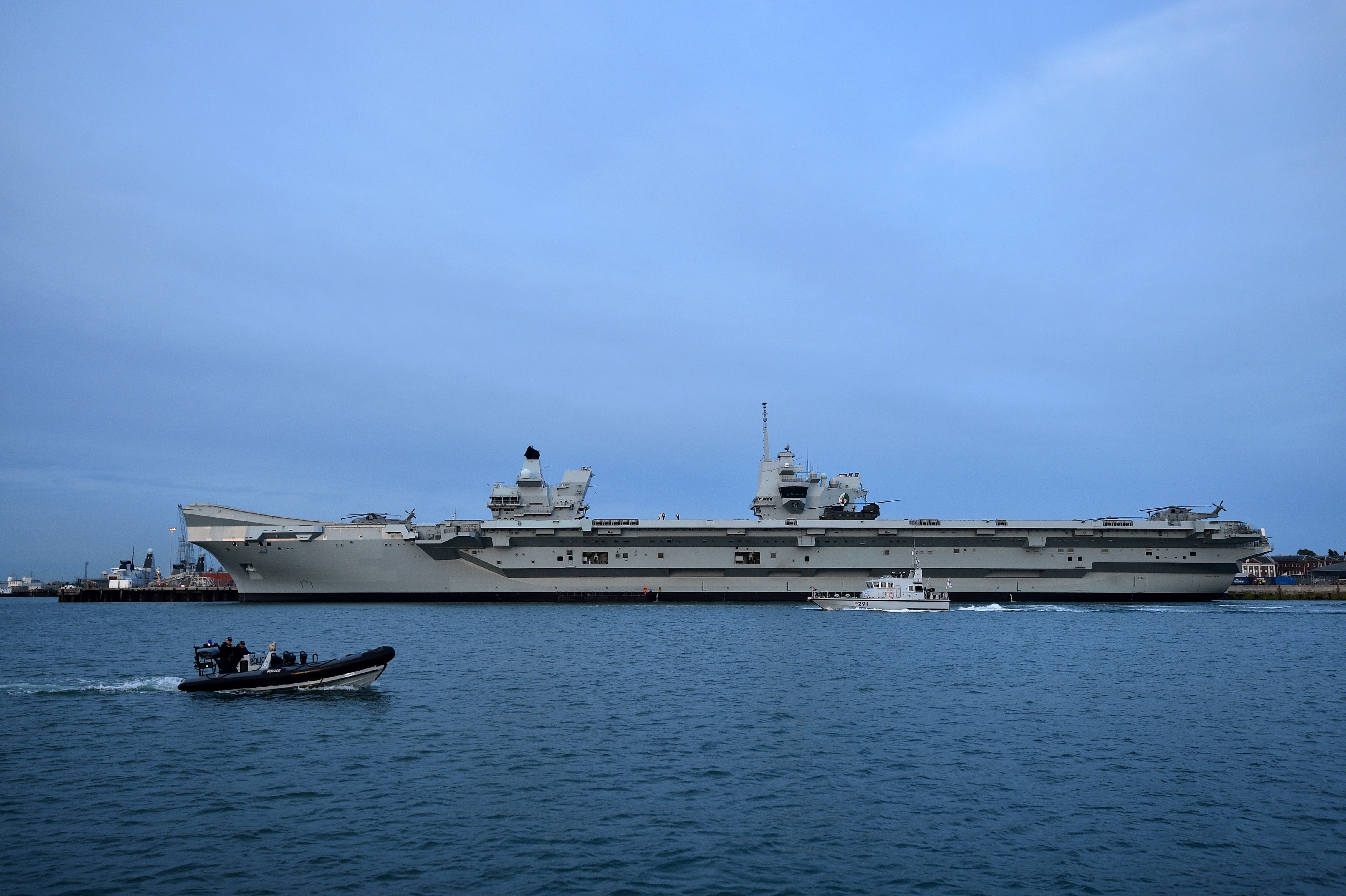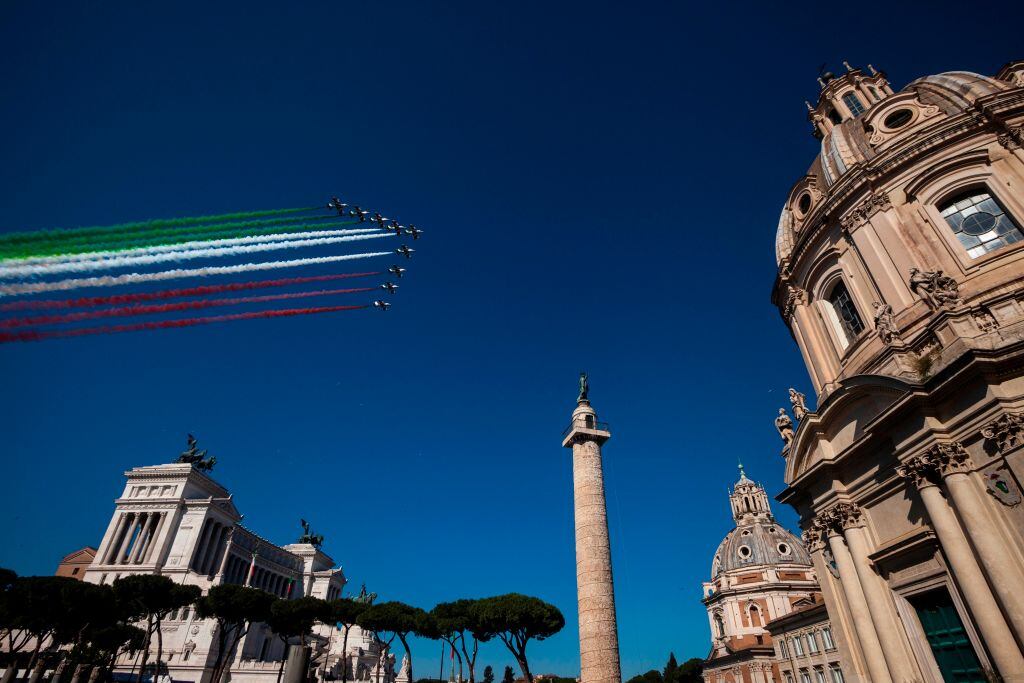CHERBOURG, France — French shipbuilder Naval Group on Friday launched the Suffren nuclear-powered attack submarine here under the gaze of President Emmanuel Macron.
The company is expected to deliver the boat to the French Navy early next year to run sea trials during the course of 2020. Industry and government officials acknowledged a tight timeline, but they said they are confident about passing all required testing and integration work before the boat can be accepted by the sea service as operationally ready.
Naval Group advertised the Suffren as having a high degree of stealth and for its ability to fire cruise missiles at faraway targets. The company’s program manager, Vincent Martinot-Lagarde, compared the boat’s acoustic signature to the “sound of the ocean,” or to the noise made by shrimp.
France wants to buy six copies of the Barracuda class, with the five future subs named Duguay-Trouin, Tourville, De Grasse, Rubis and Casabianca. All vessels are in various stages of production at Naval Group’s facilities in this Normandy coastal town, executives said. The submarine class’ service life is expected to end sometime in the 2060s.
The program clocks in at €9.1 billion, (U.S. $10.2 billion), excluding maintenance. A commitment to full funding for the entire class is reflected in the six-year military programming act covering 2019 through 2025. The fixed-price contract includes all acquisition-related costs, meaning Naval Group is on the hook for cost overruns, according to Francois Pintart, director of operations at the Direction Générale de l’Armement, the French military’s acquisition arm.
Asked about potential weak points in the program that could drive up the final price tag, Pintart said: “That’s their problem, not mine.”
Defense News accepted travel and accommodations from Naval Group to attend the launch ceremony.
RELATED

Macron toured the inside of the boat with company executives and French Armed Forces Minister Florence Parly shortly before noon. He emerged after about an hour to push a ceremonial launch lever alongside two plant workers and two members of the boat’s crew, setting off a video art installation on both sides of the boat that was meant to evoke the sights and sounds of being underwater.
The president framed the launch of the Suffren as a key event in modernizing the French naval fleet. “You are building the independence of France,” he told plant workers. “It’s our very status as a great global power.”
Macron vowed to keep future military budgets high enough to fund signature modernization projects across the other services, including the Army’s Scorpion program as well as the Air Force’s Rafale fighter modernization and, later, the Future Combat Air System.
Even though the Suffren and its sister ships won’t carry nuclear weapons, officials consider the vessels an extended part of the French atomic deterrent. That is because one of the Barracudas’ primary missions is protecting the larger nuclear ballistic submarines hiding out in the oceans.
According to Cmdr. Vincent Vacqué, the navy’s Barracuda program officer, “one or two” of the new attack submarines will be paired with a Triomphant-class ballistic nuclear sub, of which France has four.
In addition, the boats are meant to protect key naval formations embarking on operations, most notably the French aircraft carrier Charles de Gaulle.
RELATED

Third in the mission list is a broad category spanning everything from intelligence gathering to secretly delivering teams of combat divers to their dangerous workplaces. To that end, Naval Group’s contract includes the delivery of two so-called dry deck shelters, which can be fitted to the boats to transport special forces equipment or, possibly, unmanned undersea vehicles for release into the water.
Asked about the seemingly hefty mission set to be accomplished with six Barracudas, Vacqué said the class’ improved ratio between maintenance downtime and operational availability would make the workload doable. “Of course I’d like to have more, but six is efficient for the Navy,” he said.
French Navy chief Adm. Christophe Prazuck lauded the new submarine’s combat capabilities, referring to it as a “baby” long in the making. “This is not just a patrol submarine,” he said. “It’s a hunter.”
The Barracuda-class submarines will be able to stay out at sea for 70 days at a time, compared with 45 days of the Rubis-class subs they are meant to replace, according to Naval Group. While the exact date for the Suffren’s fueling of the nuclear reactor is classified, officials expect that will happen after the summer.
Sebastian Sprenger is associate editor for Europe at Defense News, reporting on the state of the defense market in the region, and on U.S.-Europe cooperation and multi-national investments in defense and global security. Previously he served as managing editor for Defense News. He is based in Cologne, Germany.







